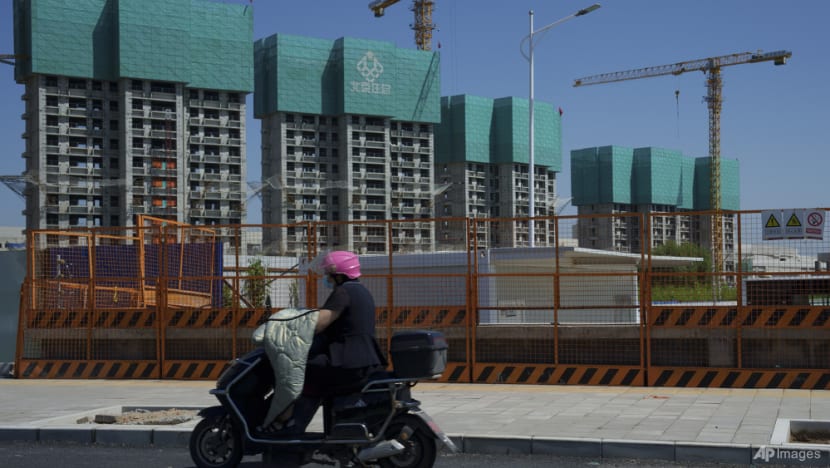Commentary: China’s cement boom is over. We can all breathe easier
The collapse of China's cement industry will lead to a more balanced economy, as well as a healthier planet, says David Fickling for Bloomberg Opinion.

SYDNEY: Imagine if France, Taiwan or the United Arab Emirates eliminated their carbon dioxide emissions in a couple of years – and no one noticed. Something similar is happening with China’s construction sector.
Cement production has been collapsing ever since the real estate bubble popped in 2021. Despite signs that the housing market may finally be stabilising, the decline has accelerated this year: First-half output fell 10.8 per cent from a year earlier.
That suggests full-year total will be in the region of 1.85 billion tonnes – roughly 20 per cent below the average 2.34 billion tonnes in the decade through 2021, and the lowest since 2009.
ONE OF THE MOST POLLUTING MATERIALS
In climate terms, that’s a hugely significant drop. Concrete is one of the most polluting materials. For every 100 tonnes of Portland cement, about 57 tonnes of carbon dioxide is released into the atmosphere, and the sector worldwide accounts for about 8 per cent of emissions.
China consumes half the total, so a 20 per cent fall in local cement output translates into a decline in global carbon pollution of nearly 1 per cent.
There’s little sign of a stimulus sufficient to cause a blowout second half. Shares in major cement producers have fallen since the close of the Chinese Communist Party’s Third Plenum meeting last week, indicating investors see little reason to expect government support. Furthermore, usage of building materials so far outstrips what we see in every other major economy that it’s hard to see it ever regaining the levels seen in the past.
That 1.85 billion tonnes of likely production for this year, for instance, translates into about 1.32 tonnes per person – between three and five times higher than in other industrialised nations. China’s in-use cement stock – a measure of all the material in buildings, roads and structures – was about the same in 2013 as the roughly 15 tonnes per person in the US.
Since then, it’s approximately doubled. Even if output slows drastically from here, China will be left with far more concrete, in both absolute and per-capita terms, than any major nation the world has ever seen.
THE FALLOUT OF CHINA’S BUILDING BOOM
The country’s building boom has gone on for so long that we tend to see it as an unchanging fact of nature. That leads analysts to underestimate the extent to which its passing is changing the world as dramatically as its initiation.
If you’re wondering, for instance, why the market keeps overestimating Chinese oil demand, it’s worth considering the trajectory of two products refined from crude: Asphalt and jet fuel. For many years, China consumed as much of the former (used by builders in surfacing roads and roofing materials) as the latter (used in flying planes around).
While jet fuel has bounced back as people start travelling again after COVID-19, construction-exposed asphalt seems to have reset at a permanently lower level. That’s what you’d expect from in the aftermath of a once-in-history orgy of house-building. If you’re anticipating that every economic indicator will revert to the trendlines of the 2010s, you’re going to be disappointed.
All roads to net zero run through China. With about a third of the world’s carbon pollution and more than half of its annual renewable power installations, it’s both the biggest contributor to a warming planet, and the place where we’re most likely to turn a corner on centuries of emissions.
Where the cement sector leads, the rest of industry will follow. That will result in a more balanced Chinese economy, as well as a healthier planet. Cement’s decline is one burst bubble we should welcome.















